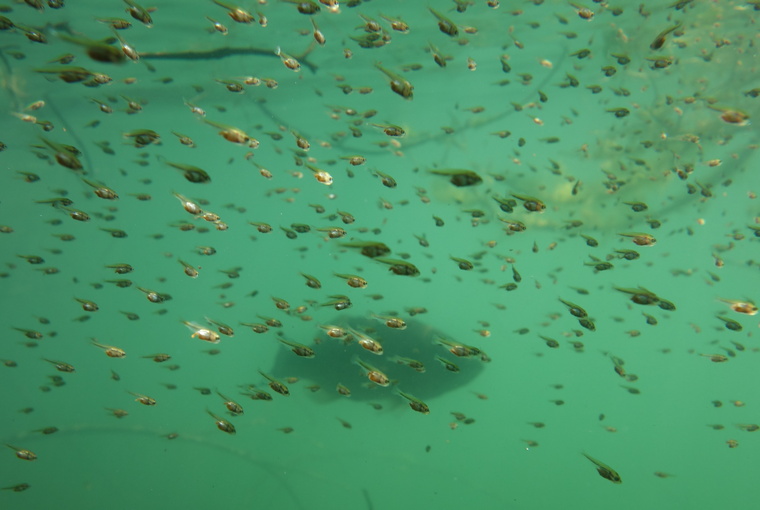Explaining the science behind the FMZ 20 bass season expansion

Editor’s Note: The proposed changes to the bass seasons in FMZ 20 are being implemented this year. Click here and here for more information.
Science and public sentiment often clash when it comes to spring bass fishing, particularly on when the fish spawn.
Fisheries Management Zone (FMZ) regulations also differ throughout the province. Regulations on bass fishing range from fully open, but under restricted creel or slot lengths, to fully closed seasons from ice out to the end of June.
No one fisheries policy can be overlaid across Ontario because of its size and diversity. Regulation requires local and regional stakeholders to formulate a plan that best suits the needs of the community and the welfare of the fishery. Most northern FMZs do offer some form of spring bass fishing, where all southern zones do not.
Spawn preservation key
Reduced harvest, catch and release, or slot limits are conservation measures that allow spring bass fishing in these FMZs. Efforts to balance preservation, conservation, and access should inform regulations, but the outcomes can vary greatly.
At the core of the closed season is the preservation of spawn. Not all fish spawn at the exact time, and bass are no different. The peak of southern Ontario bass spawn is from mid-May to mid-June and for some waterbodies, well into July. Understanding how anglers impact the fishery during this vulnerable period is crucial.
The science is very clear. Studies have concluded that angling during the spawn is damaging. There are ecological and evolutionary implications to catching nesting bass, with long term consequences. The success of healthy spawn is limited when bass, male or female, are caught, released, kept, injured, or displaced.
Once the female has laid eggs, the male assumes a guardian role. Predation can be high if newly laid eggs or the brood don’t have the protection of an aggressive male.
Angling impacts bass
Researchers have explored the vulnerability of spawning bass and clearly illustrated that angling pressure significantly impacts bass behaviour and can have immediate negative consequences and even result in the destruction of an entire brood.
Dr. Bruce Tufts of Queen’s University’s Freshwater Fisheries Conservation Lab found that “…consistent removal of the reproductive contribution of the largest individuals could have important long-term implications for these populations.”
In a recent paper in the Journal of Great Lakes Research, Tufts conducted a three-year study from 2014-2017 to evaluate the amount of protection provided by the current closed season for bass angling. The study examined the timing of spawning and development from egg to the swim-up fry stage (free swimming juvenile fish) for both largemouth and smallmouth in the eastern basin of Lake Ontario and the St. Lawrence River.
Research discovered a stark contrast in spawning completion between largemouth and smallmouth by the 3rd Saturday in June. Only 4 to 13% of smallmouth nests were past the “swim-up” stage and considered a success. Largemouth bass obtained an average of 58% completion rate by opening day. Realizing that between 87 to 96% of smallmouth were exposed to angling in conjunction with an overabundance of round gobies, the research illustrated a glaring concern. Dr. Tufts’ research indicated that it may be time to re-evaluate the bass season opening dates to maintain and preserve the quality of the bass fisheries in Lake Ontario and the St. Lawrence River.
Season extended
In March 2020, the Ministry of Natural Resources and Forestry (MNRF) sought public input regarding the proposed push back of the smallmouth season until the first Saturday in July for FMZ 20 (Lake Ontario and St. Lawrence River).
This extension, which comes into effect this year, gives more time to conserve the smallmouth fishery.
Angling for largemouth bass remains unchanged and start on the third Saturday in June. The aggregate catch and possession limits Sport (6) and Conservation (2) for largemouth and smallmouth combined was also maintained.
The MNRF also proposed early season opportunities for bass from January 1st to May 10th. Options included imposing a reduced catch and possession limit (S-2; C-1), a catch-and-release only season, or maintaining the status quo. The catch-and-release season was chosen.
OFAH weighs in
“Early season opportunities for bass have the potential to compromise the management strategies being proposed during the regular season, and so it appears that more data and information is needed to reduce these uncertainties prior to the consideration of early season options for bass,” said Adam Weir, Fisheries Biologist for the Ontario Federation of Anglers and Hunters (OFAH).
“The OFAH supports splitting the bass season as proposed, but suggests that the MNRF continues to monitor and assess the fishery to ensure the regulation change is effective, or that other management strategies may be needed to better conserve smallmouth bass.”
There may be differences of opinion when it comes to spring bass seasons, but what is clear is that anglers are engaged, and science is informing the decision-making process that will help us better manage our natural resources.

Luigi’s love affair with angling started when he was a lad and has never faltered. When not gawking at lures, he can be found setting goose or turkey decoys, or in a tree stand. Reach Luigi at mail@oodmag.com
Originally published in Ontario OUT of DOORS’ 2020 Fishing Annual.
